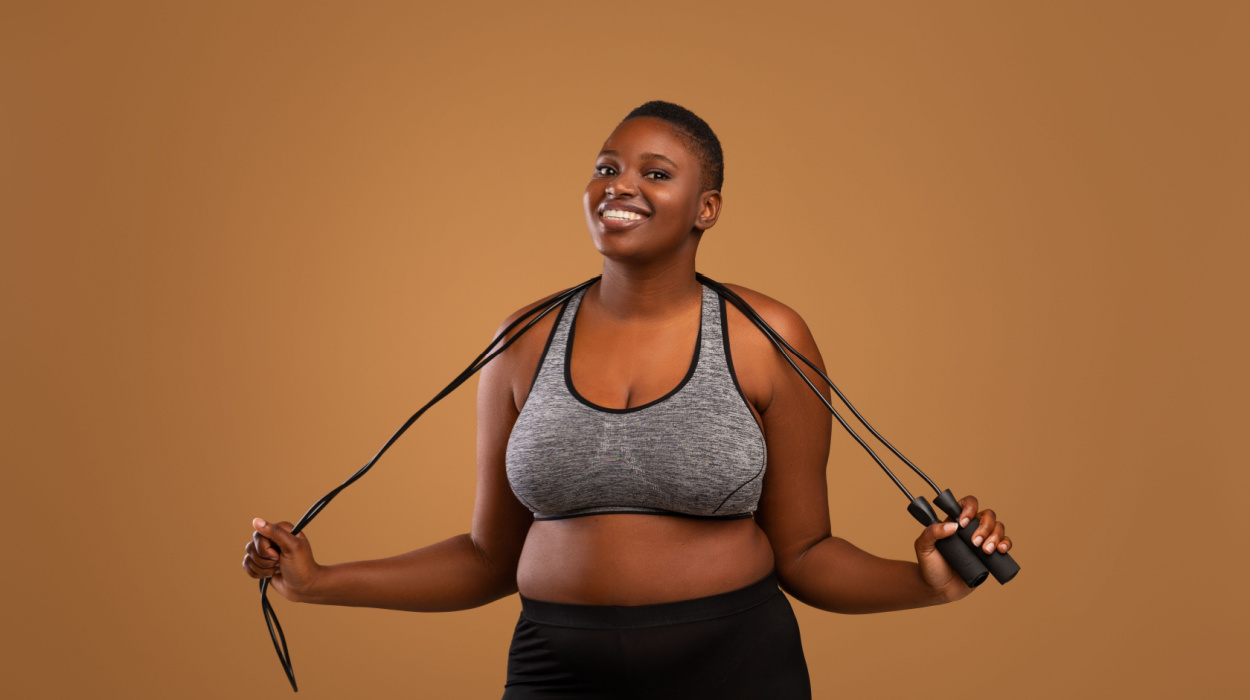Wearing a sleeveless shirt in the spring can be ideal, but you might be hesitant to wear it if you have shoulder fat. This type of fat affects the curve and contour of the shoulder, resulting in a less defined and wider shoulder. Furthermore, extra fat in the area can limit shoulder movement.
Shoulder fat develops due to an accumulation of extra fat tissue around the shoulder. Although the shoulder comprises muscles, tendons, and bones, it can store fat, especially in persons with a high body fat percentage. Hormones and genetics can both contribute to fat accumulation.
If you wonder how to lose shoulder fat effectively, there are activities you can do to support fat burn in the shoulders. Here are five workouts that will assist you in losing shoulder fat.
How To Reduce Shoulder Fat
The best upper body exercises for losing shoulder fat combine:
- Lateral Raises.
- Pushups.
- Upright Rows.
- Overhead Dumbbell Press.
- Tricep Dips.
Five Best Exercises To Burn Shoulder Fat
Although it’s scientifically impossible to eliminate fat from one body area,[1] several classic exercises can target shoulder fat and help build lean muscle mass. Read on to learn more:
Lateral Raise
The lateral raise is a strength training exercise that works the deltoid muscles in the shoulder. Aside from the shoulders, lateral raises strengthen the upper arms, trapezius muscles, underarms, and wings. Dumbbells are used in this exercise.
To do a lateral raise, stand with your legs shoulder-width apart, your back straight, and your core engaged. After that, grip a dumbbell in each hand. Raise your arms to either side at the same time and pause once you reach shoulder height. Pausing targets the deltoids by disengaging the trapezius muscle.
Some people may use heavy dumbbells in a frantic attempt to shed fat. Unfortunately, hefty dumbbells make it difficult to maintain appropriate form and control. Begin with lighter dumbbells before progressing to heavier ones.
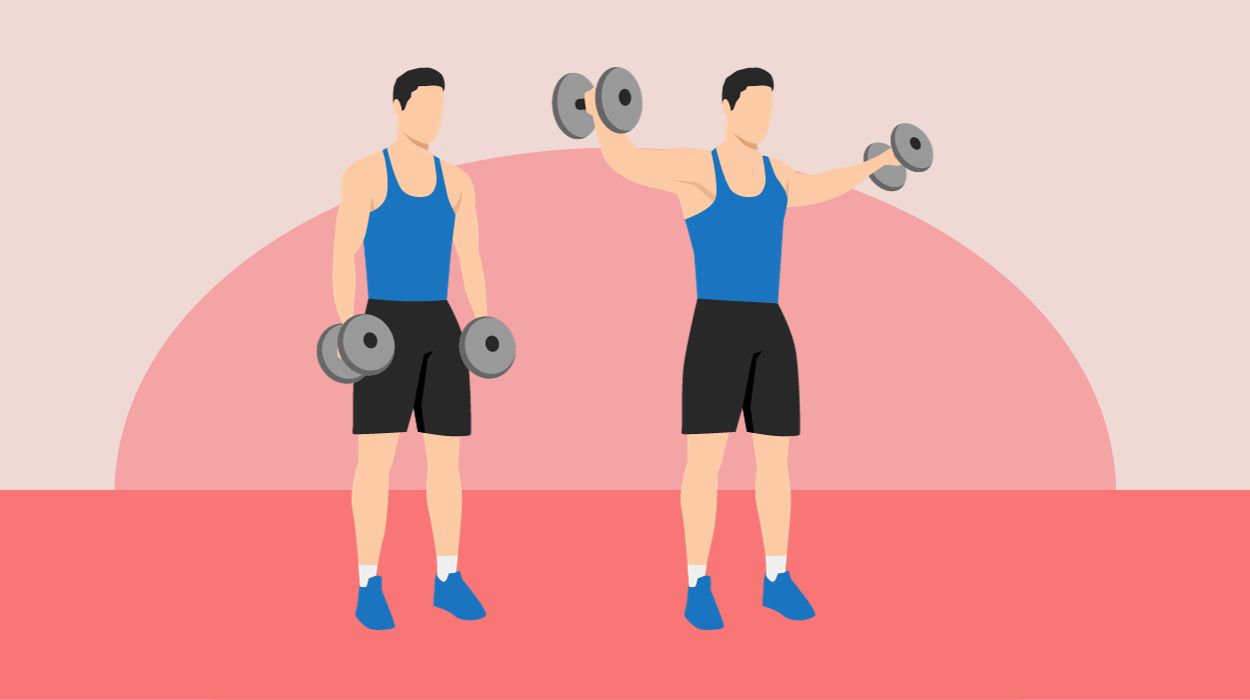
How to do:
- Stand with feet shoulder-width apart, holding dumbbells at sides.
- Keep a slight bend in your elbows.
- Lift both arms out to the sides.
- Raise to shoulder level.
- Lower slowly to the starting position.
Tips:
- Lift the dumbbells with control, avoiding any swinging or jerking motions, to effectively target the shoulder muscles.
- Keep a slight bend in your elbows and avoid lifting the weights higher than the shoulder level to minimize strain on the shoulder joint.
- Start with lighter weights to ensure proper form, and gradually increase the weight as you build strength to avoid overloading the shoulders.
Optimal Sets and Reps: Three to four sets with eight to 12 reps per set.
Push Ups
Pushups are a great way to help lose arm fat and shoulder fat. They help with overall weight loss while toning the shoulders, chest, and triceps muscles. Pushups can be done as part of a strength workout routine or bodyweight exercise session.
To perform a pushup, get down on all fours and position your hands slightly wider than your shoulders. Extend your legs out, balancing on your toes with your body parallel to the ground. Keep your elbows slightly bent but not locked out.
Once you’re in position, bend your elbows and lower yourself close to the floor. Inhale as you lower yourself to the ground and exhale as you push yourself back.
As a beginner, doing a pushup can be difficult. As a result, you should warm up your muscles with modest cardiovascular exercise or dynamic stretches. A warm-up increases blood flow to your muscles, preparing them for exercise.
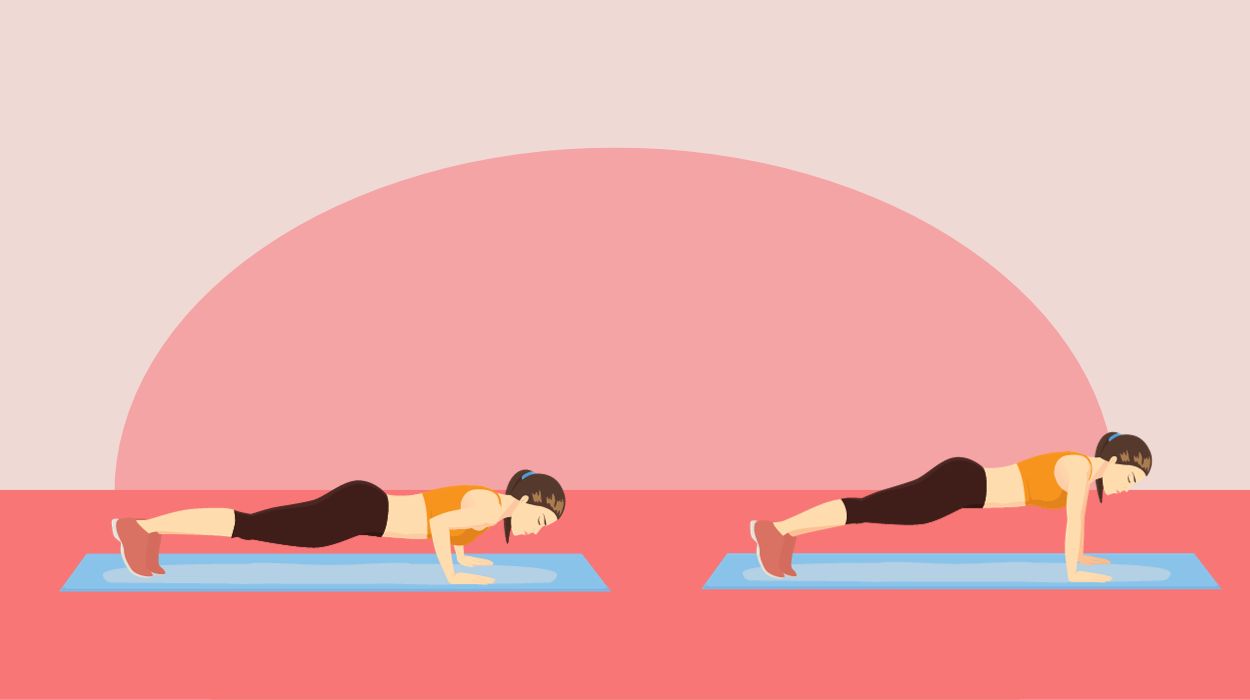
How to do:
- Begin in a plank position with hands shoulder-width apart.
- Lower body by bending elbows, keeping back straight.
- Push back up to the starting position.
- Engage the core and maintain a neutral neck and spine.
- Repeat for desired reps.
Tips:
- Maintain a straight line from head to heels, engage your core, and avoid arching or sagging to protect your spine.
- Lower your body with control, emphasizing the chest and triceps muscles, and exhale as you push back up.
- Position your hands slightly wider than shoulder-width apart to target the chest effectively while maintaining proper form.
Optimal Sets and Reps: aim for three to four sets with eight to 12 reps per set.
Upright Rows
The upright row is an excellent workout for strengthening your shoulders, arms, and back. If you use the proper form, this exercise can be safe and effective for reducing fat in your shoulders. To avoid injury, bring your shoulder blades back and stabilize them while lifting the bar or dumbbells.
Stand with your feet shoulder-width apart and your knees slightly bent. Then, position your bar or dumbbells in front of your thighs. Lift the weight straight up towards your chin to start the exercise, keeping your wrists flat. Pause briefly near your chin before carefully lowering the weight back to the starting position.
Some people pull the bar too high, especially over shoulder level. Lifting the bar so high can place too much strain on the shoulder, causing impingement. Remain in control of your movements and prioritize proper form over the number of repetitions performed.
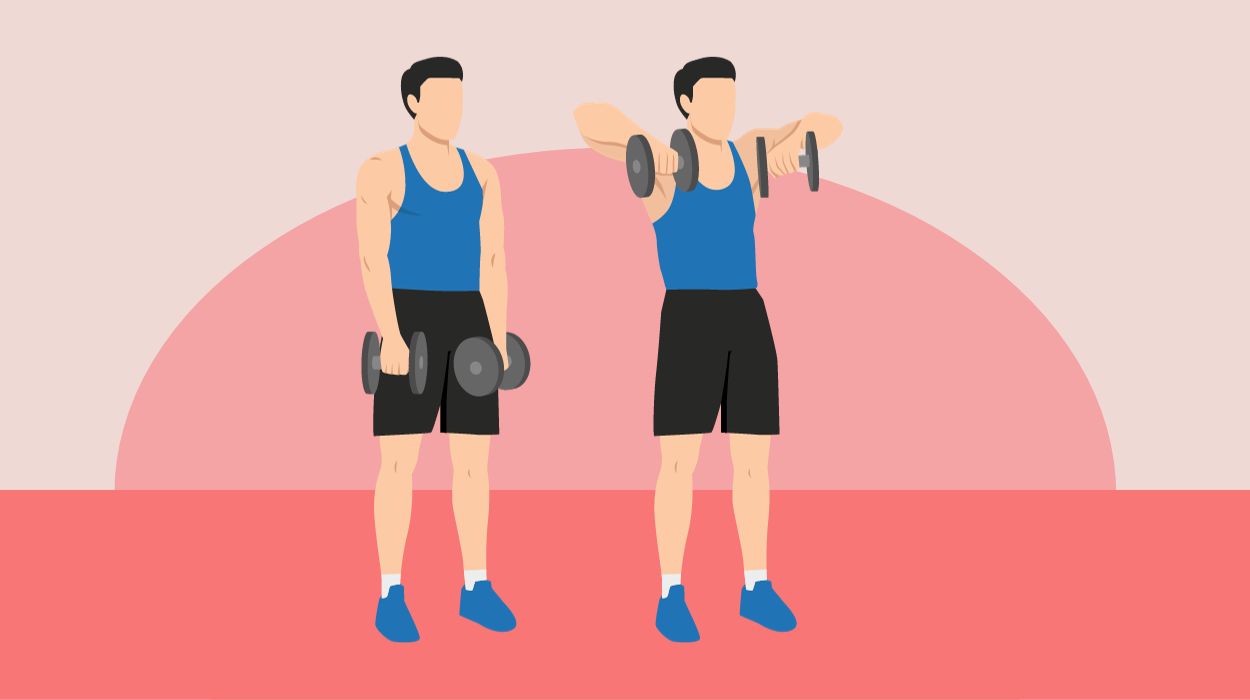
How to do:
- Stand with feet hip-width apart, holding a barbell or dumbbell.
- Hold weights in front of thighs, palms facing you.
- Lift weights close to the chest, leading with elbows.
- Lift to shoulder height, keeping weights close to the body.
- Lower weights slowly to the starting position, engaging shoulder muscles.
Tips:
- Use a shoulder-width grip and keep wrists neutral to minimize strain on the wrists and shoulders.
- Lift the weights in a controlled manner, leading with your elbows and avoiding excessive shoulder elevation.
- Start with lighter weights and focus on form.
Optimal Sets and Reps: Three to four sets of right 2 reps
Overhead Dumbbell Press
The Overhead Dumbbell Press primarily works the deltoid muscles in the shoulders, as well as the upper back and triceps. It is performed with dumbbells by pressing the weights overhead while standing or sitting. Barbells are not recommended for beginners.
Move the dumbbells overhead by extending your arms fully without locking out your elbows. Keep your shoulders down and away from your ears. When you lower the dumbbells to the starting position, maintain control by not making swinging or jerking motions. Practice structured breathing, exhaling on the press-up and inhaling on the way down.
While performing this workout, you may feel pain, discomfort, or weird sensations in your shoulders. If this occurs, you should immediately stop and seek the advice of a personal trainer or a healthcare expert. It could indicate shoulder impingement or rotator cuff strain.[2]
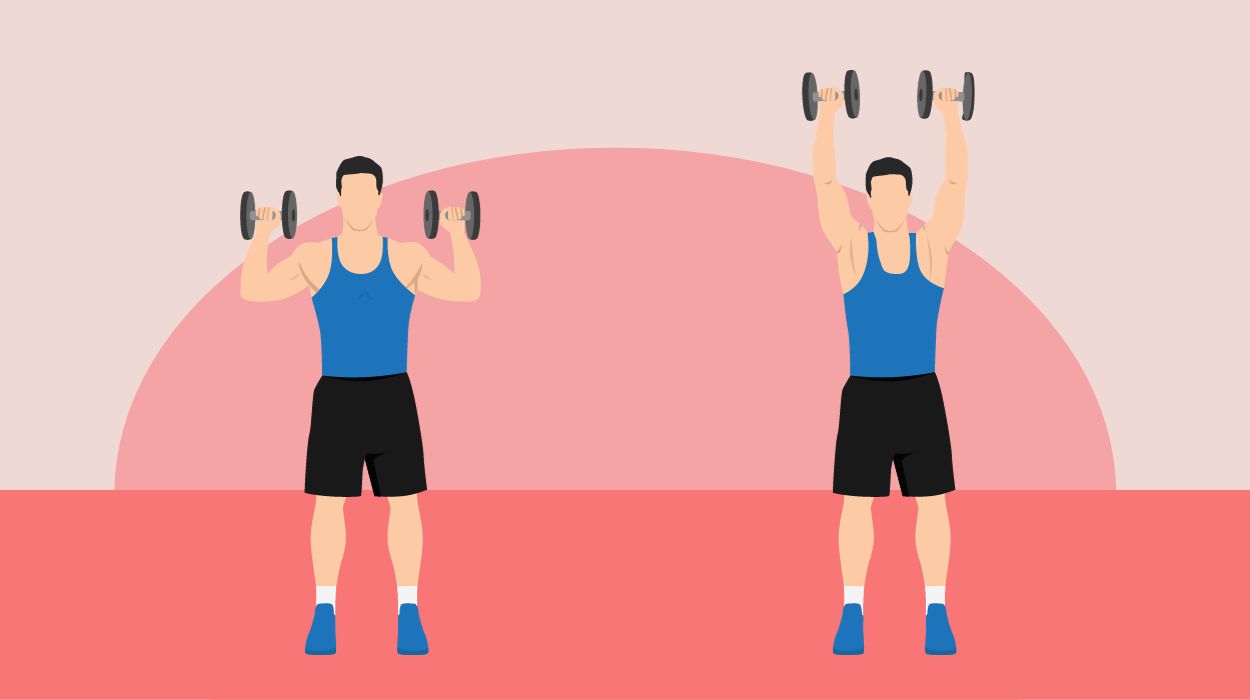
How to do:
- Sit on a bench with back support.
- Hold dumbbells at shoulder height, palms facing forward.
- Press weights overhead until arms are fully extended.
- Lower weights back to shoulder height.
- Maintain proper form and controlled movement.
Tips:
- Sit with back support, engage your core, and press weights directly overhead, avoiding leaning back or arching your lower back.
- Lift and lower the weights with control to engage your shoulder muscles effectively and minimize the risk of injury.
- Begin with weights that allow you to complete 3-4 sets of 8-12 reps with good form. Gradually increase weight as you get stronger.
Optimal Sets and Reps: Aim for three to four sets with eight to 12 reps per set.
Tricep Dips
If you want to know how to lose arm and shoulder fat, Tricep Dips are the way to go. They concentrate on the triceps muscles on the rear of the arms. The advantage of this workout is that you can perform it at home rather than going to the gym.
To perform Tricep Dips, sit on the edge of a chair or bench with your hands on the edge, fingers facing out. Step forward and slide your buttocks off the edge, lowering yourself towards the ground. Return to the beginning posture by extending your elbows and pushing through your hands to lengthen your arms. Aim for 2-3 sets of 10-15 reps per set.
You may feel discomfort or lack proper form when performing this workout at times. Fortunately, there are alternative exercises that efficiently target the triceps. You could, for example, conduct tricep pushdowns with cables or close-grip push-ups.
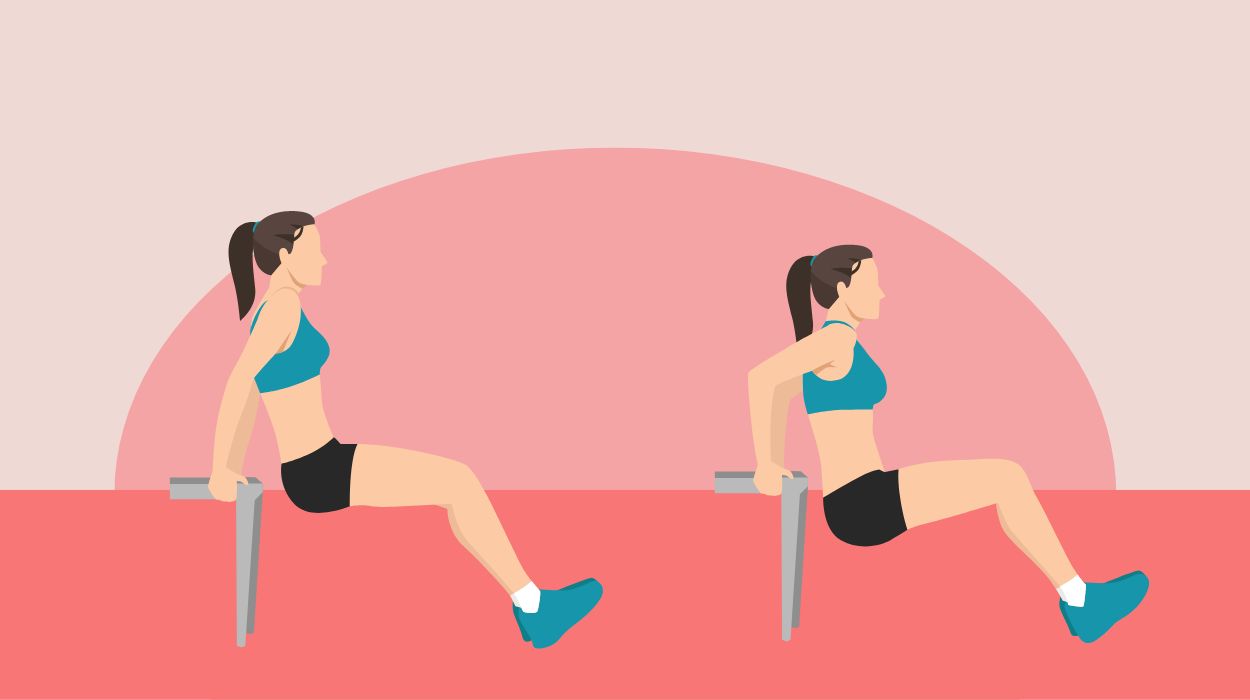
How to do:
- Sit on a bench, hands gripping the edge.
- Slide your hips forward and lower your body.
- Push up, extending your arms.
Tips:
- Keep your back close to the bench, elbows pointed backward, and focus on using your triceps to lift and lower your body.
- Lower your body until your elbows are bent at a 90-degree angle or slightly less to engage the triceps effectively.
- Begin with 3 sets of 8-12 reps using proper form. As you become stronger, increase sets or reps.
Optimal Sets and Reps: Aim for three to four sets with eight to 12 reps per set.
What Causes Shoulder Fat?
Genetics[3] predisposes some people to retain fat around the shoulders and upper back due to genetics. Genetics can influence an individual’s physical form and frame, influencing fat distribution.[3] Furthermore, hormone levels, specifically estrogen[4] and testosterone,[5], and how they interact with fat cells are influenced by genetics.[6]
Another factor contributing to shoulder fat is aging, which causes the body’s metabolism to slow. With a slow metabolism, the body burns fewer calories.
Consuming unhealthy foods such as fast food, fried foods, and sugary beverages can also contribute to shoulder fat. Because these foods are abundant in calories, your body will be unable to burn them quickly enough. People who consume unhealthy meals consume foods deficient in key elements such as vitamins, fiber, and minerals.
These nutrients are necessary for your body’s metabolism to stay balanced.
Another factor that contributes to shoulder fat is a lack of exercise. You burn fewer calories when you do not exercise. In addition, not exercising might cause muscular atrophy or shrinkage. Your metabolism will slow[7] as your muscle mass decreases, thus resulting in weight gain.
Other Methods To Reduce Shoulder Fat
As earlier established, eating foods high in calories can cause excess fat. That means to avoid becoming fat, you must create a calorie deficit. A caloric deficit is when you consume fewer calories than your body needs. To do that, you must choose lower-calorie foods and eat smaller portion sizes.
Another way to lose fat[8] is by drinking water.[8] The higher your water intake, the faster your metabolism. With a high metabolism, you can lose weight efficiently. Water also indirectly causes weight loss by suppressing your appetite, causing you to eat less.
Although not highly recommended by registered dietitians, taking a supplement may support efforts to lose arm fat. There are many dietary supplements to choose from that can encourage weight loss in different ways.
For instance, chitosan[9] binds dietary fat in the digestive tract, while chromium[10] reduces hunger levels. Due to varying factors that cause shoulder fat among individuals, it would be best to consult a healthcare professional before taking any supplement.
You can also lose weight by managing your stress levels. Cortisol, the stress hormone, gets released whenever you are stressed. This hormone increases your appetite and can trigger cravings for sugary or fatty foods.
You can manage your stress levels by identifying triggers, practicing relaxation techniques, prioritizing self-care, and seeking professional help. Getting enough sleep,[11] approximately 7-9 hours every night,[12] is another way to reduce stress and lose shoulder fat.
Conclusion
If you’ve been wondering how to lose shoulder fat, this article may be helpful. However, it’s essential to enlist the help of a registered dietitian and a certified personal trainer to ensure your weight loss methods are safe and sustainable. Losing shoulder fat can support overall health and help you reclaim your self-esteem.
Of course, eliminating shoulder fat isn’t just about looking good and improving your body composition. It also aims to improve the functional movement of your arm muscles. For example, reaching for an item on a shelf can be difficult with too much shoulder fat.
Remember to take a holistic approach to reduce shoulder fat. You should not rely solely on exercise to lose weight. You must remember to make healthy lifestyle changes by consuming the proper meals in the right amounts, getting adequate sleep, managing stress, and staying hydrated.
Frequently Asked Questions
To slim down your shoulders, you must combine resistance training exercises with cardiovascular exercises. For the latter, you can swim, jog, or cycle.
Fat burning varies based on lifestyle habits, genetics, and individual metabolism. Regardless, losing shoulder fat requires consistent effort and dedication.
Excluding exercise will cause you to lose shoulder fat more slowly. Nevertheless, you can lose shoulder weight by creating a calorie deficit, drinking water, getting enough sleep, and avoiding sugary beverages.
There are no foods that specifically reduce shoulder fat.
Cardio exercises lead to losing weight overall and fat reduction. However, combining a balanced diet with cardio with targeted exercise, such as weight training exercises that focus on losing arm fat, is essential.
No specific supplements target weight loss in the shoulder or any other body part. Instead, focus on adopting a healthy diet and exercising regularly.
Shoulder fat can be dangerous, as excessive fat may cause type 2 diabetes, cancer, and heart disease. Additionally, excess weight can put a strain on the joints.
 Evidence Based
Evidence Based
